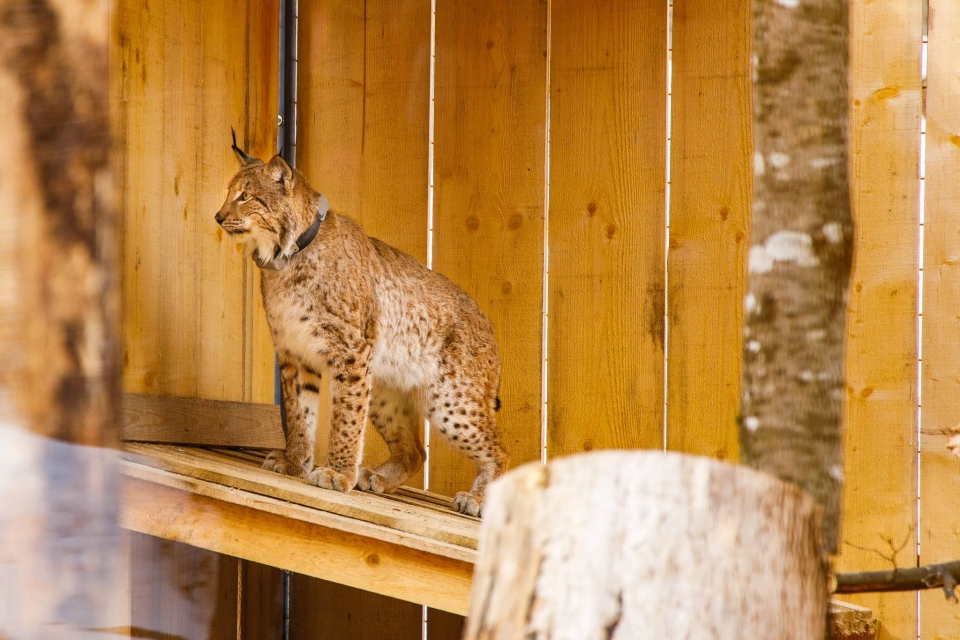
Eurasian lynx (Lynx lynx)
| Size |
|
| Weight |
|
| Diet |
|
| Habitat |
|
| Kingdom |
|
| Phylum |
|
| Class |
|
| Order |
|
| Family |
|
| Genus |
|
| Species |
|
The Eurasian lynx is the largest and most endangered among the three species of European cats. In Slovenia, it was exterminated in the past century. In 1973, six lynxes- three males and three females, were reintroduced from Slovakia, and they subsequently bred and spread across our territory and neighboring countries. Today, only about 15 to 20 adult animals live in Slovenia, and they are highly endangered due to inbreeding. This charismatic cat typically lives in the forests of Northern Europe, Russia, and Central Asia.
Its fur is reddish-gray with stripes, and its tail is short with a black tip. The hind legs are longer than the front ones.
The lynx is a solitary animal that defends its territory from other males and marks it by urinating on stones, trees, and other surfaces.
It only meets with a female during the mating season at the end of winter. Although a very quiet predator, during this time it loudly meows and calls for a female. The female gives birth to one to four cubs around May and raises them alone. The cubs learn hunting and survival skills from mother.
DO YOU KNOW?
- The characteristic black muffs on the tips of the lynx's ears are up to 4 centimeters long.
- Right after the bear and the wolf, the lynx is the third largest predator in Europe.
- The lynx does not chase its prey. Its hunting tactic is stalking or ambushing. An expert in the element of surprise!
- Due to inbreeding, the lynx population in Slovenia is at risk of extinction, so at least 10 lynxes will be relocated from Romania and Slovakia.
- The constellation in the northern hemisphere is also named after lynx.
- On June 11th, we celebrate International Lynx Day.
Thank you.

